The Flying Car Is Dead
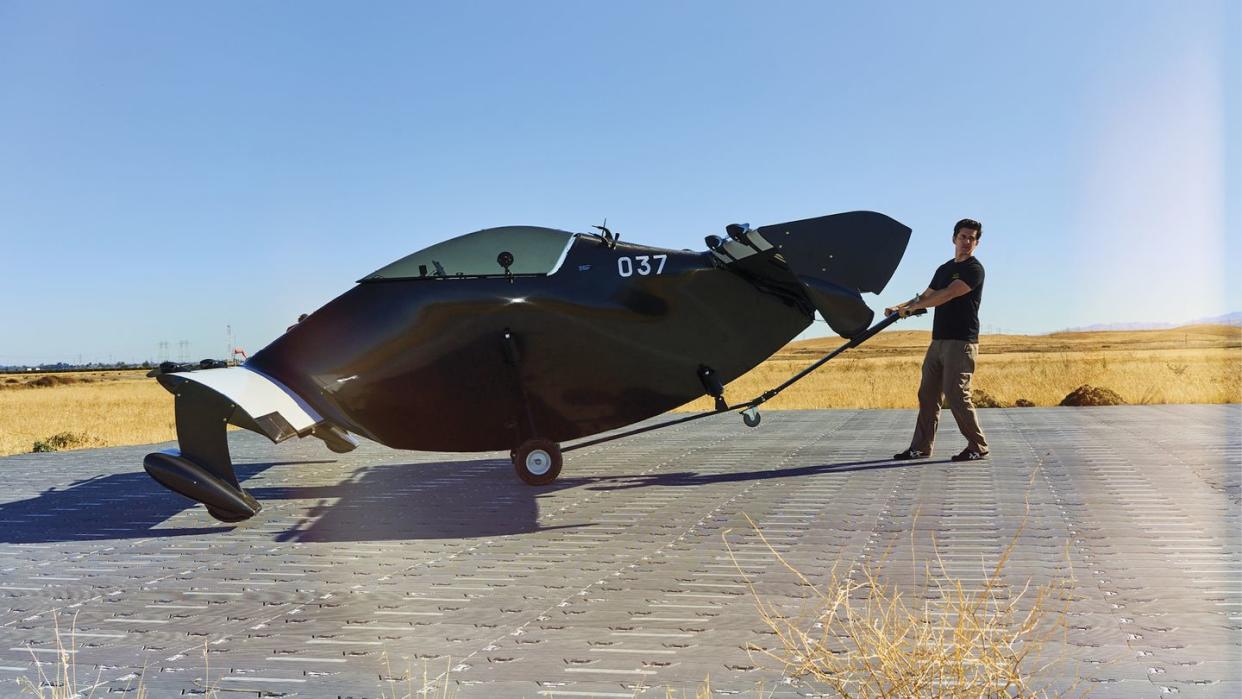
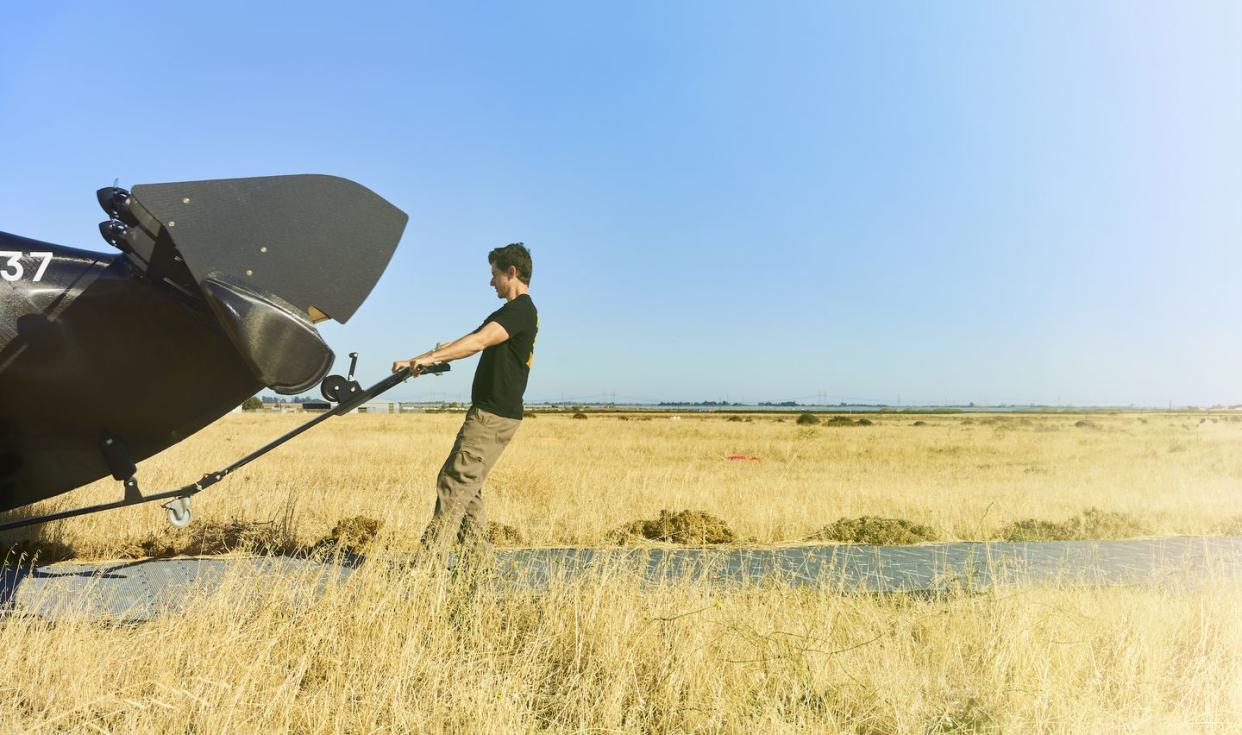
A perennial punchline in the automotive world, the flying car holds the imagination of at least a few dreamers to this day—despite the fact that it is no less a dumb idea now than decades ago.
This story originally appeared in Volume 21 of Road & Track.
The obsession with flying cars dates to at least 1917. That year, Glenn Hammond Curtiss, a bicycle racer turned motorcycle builder, created the Curtiss Autoplane, widely considered the first attempt at a “roadable aircraft,” or flying car. It didn’t work. Later, postwar America experienced a confluence of economic prosperity, optimism, and emerging technologies, and many an inventor claimed to have cracked the formula for the flying car. They hadn’t. No one has made a vehicle capable of driving and flying with equal ability.
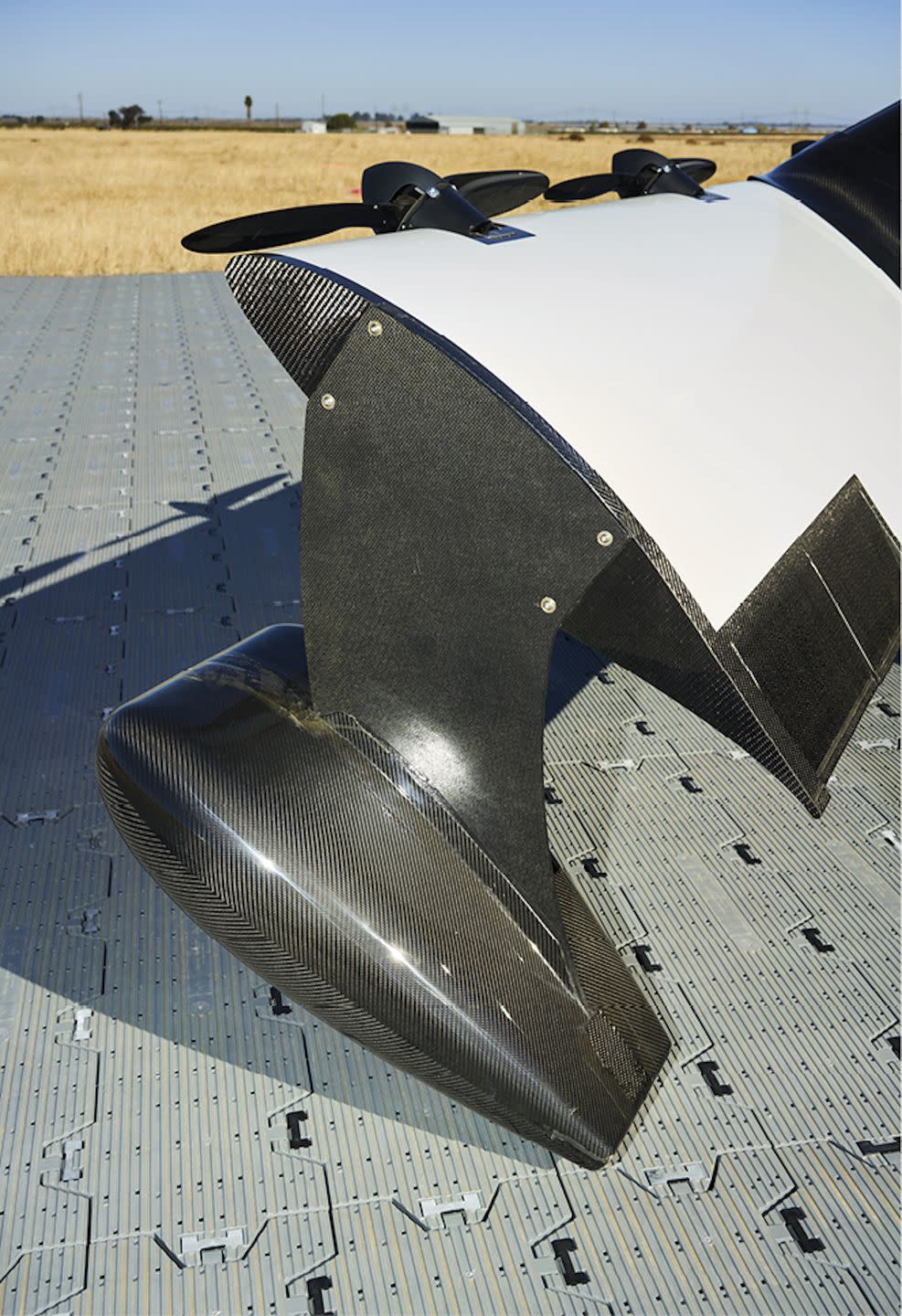
“A car is a magnificent machine, the product of a lot of engineering to make it appropriate for driving it on the road. Aircraft are a completely different set of constraints. Combining the functionality of a road car and an aircraft invariably results in an outcome that is not well suited for either one,” says Ken Karklin, CEO of Pivotal, the company behind the BlackFly and Helix eVTOL (electric vertical takeoff and landing) personal aircraft.
Pivotal is careful not to call its products flying cars, though these craft are easier to use than a Cessna. And you don’t need an airport; the BlackFly can take off from a strip as short as 45 feet.
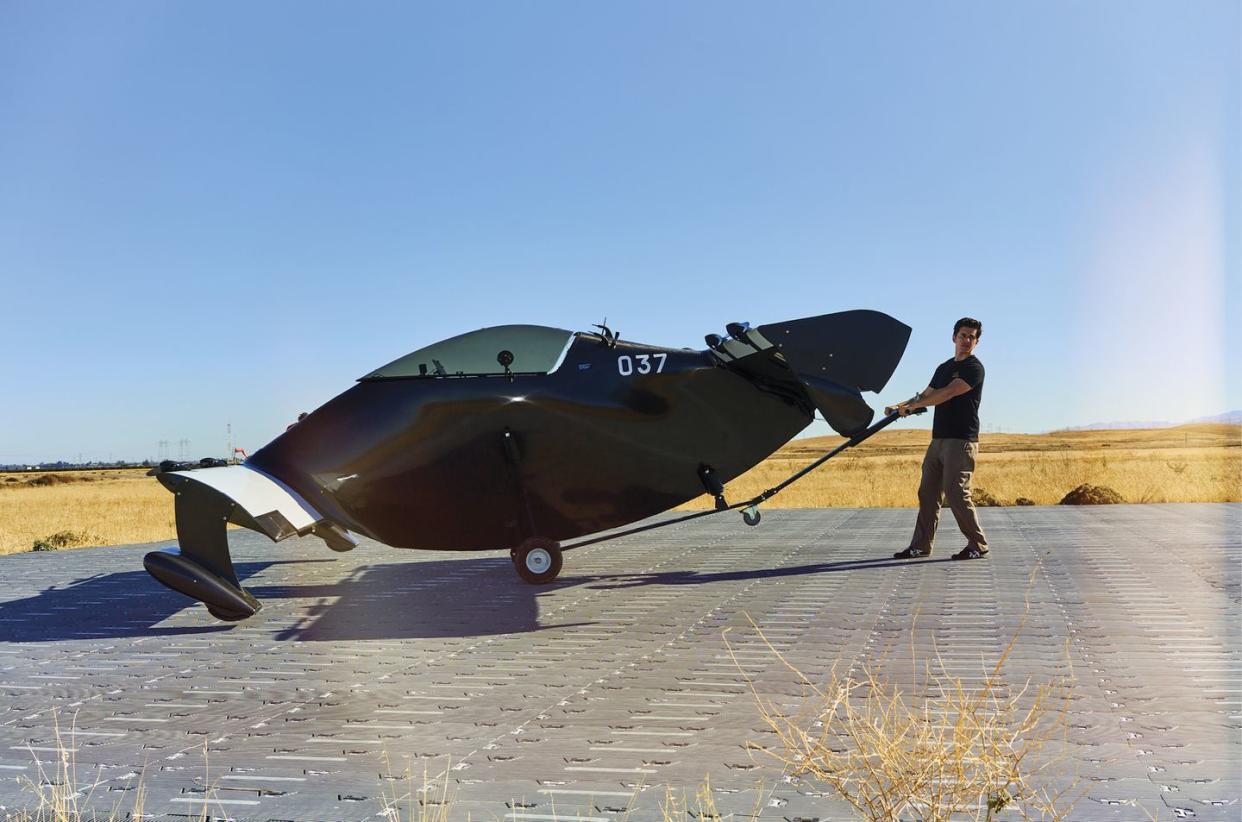
The BlackFly is the creation of Canadian engineer Marcus Leng. In 2011, Leng proved the concept when he lifted off from his own yard, flew for 20 seconds, and touched down. His company, originally called Opener, moved to Silicon Valley in 2014, finding interest and cash from the likes of Google co-founder Larry Page. In 2022, Leng amicably passed CEO duties to Karklin, a man with unmanned aerial vehicles (UAVs, a.k.a. drones), smart weapons, and the Mars helicopter on his résumé.
The aviation firm moved carefully. A 200-pound sandbag was the pilot for years before Pivotal put a human in a BlackFly (that weight restriction remains for this craft). Karklin’s experience brought about more testing and the design of a Faraday cage around the flight computers.
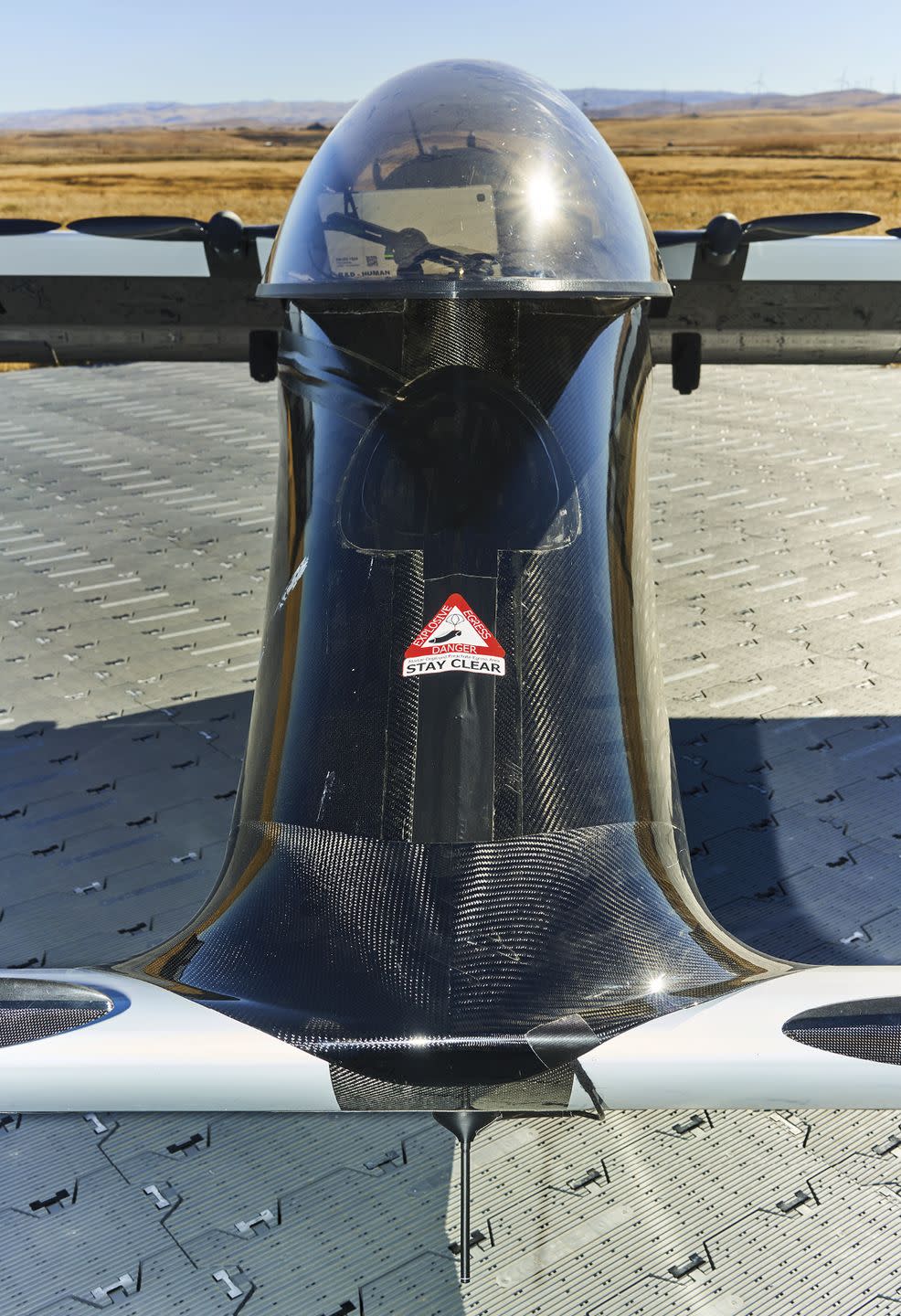
I thought I was going to ride in the BlackFly while it followed a preprogrammed flight pattern, an aerial Uber of sorts. Wrong. I’d be the pilot. I’d spend more than two days training on Pivotal’s simulator, and if that went well, I would be allowed to take off, hover 30 feet above the earth, and land. I am not a pilot. Checklists disagree with me. I do improv and ignore check-engine lights. You can’t do that with something that has a ballistic parachute system.
Flight is heavily regulated in the United States. Most aircraft, including helicopters, require a pilot’s license to operate. An equipment failure or a change in the weather can make your return to earth very difficult or tragically rapid.
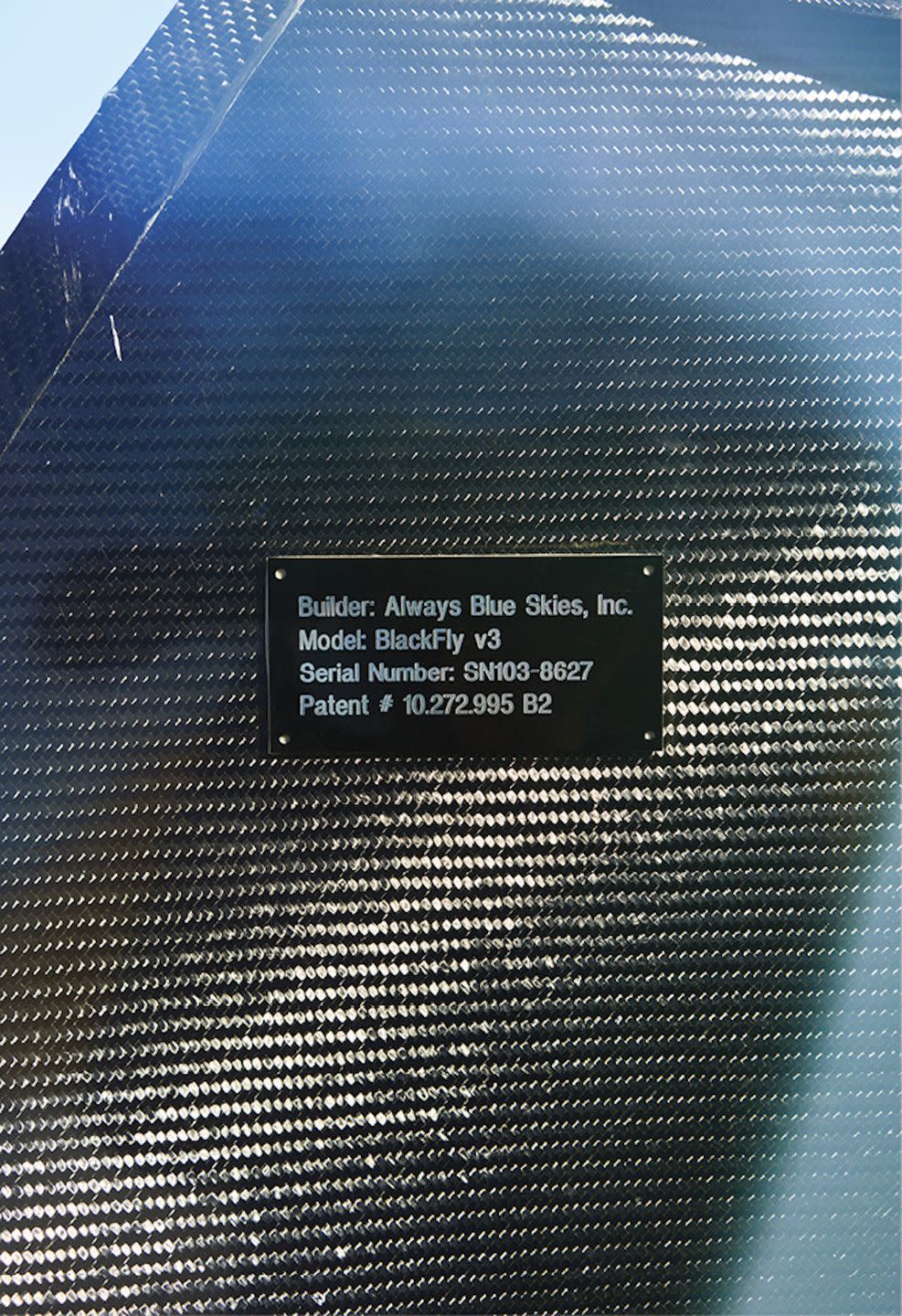
However, the BlackFly and Helix ultralights fall under the Federal Aviation Administration’s Part 103 regulations, which apply to low-powered fixed-wing aircraft and paragliders wearing fans on their backs. The restrictions state that a powered vehicle must weigh less than 254 pounds, carry no more than five gallons of fuel, have a power-off stall speed of no more than 24 knots, and not exceed a maximum speed of 55 knots. The BlackFly weighs 348 pounds but earns weight credits thanks to extra safety attributes, such as its parachute system and ability to land on water.
Pivotal built 32 BlackFlys. Twelve were earmarked for customers who provided feedback; the rest were for testing, training, and demonstrating its UAV capabilities. The Helix is for public sale. At 13 feet five inches long and 13 feet seven inches wide, the curvaceous carbon bug is identical in shape and ability to the BlackFly but has a thin layer of Alcantara-like fabric covering the inside.
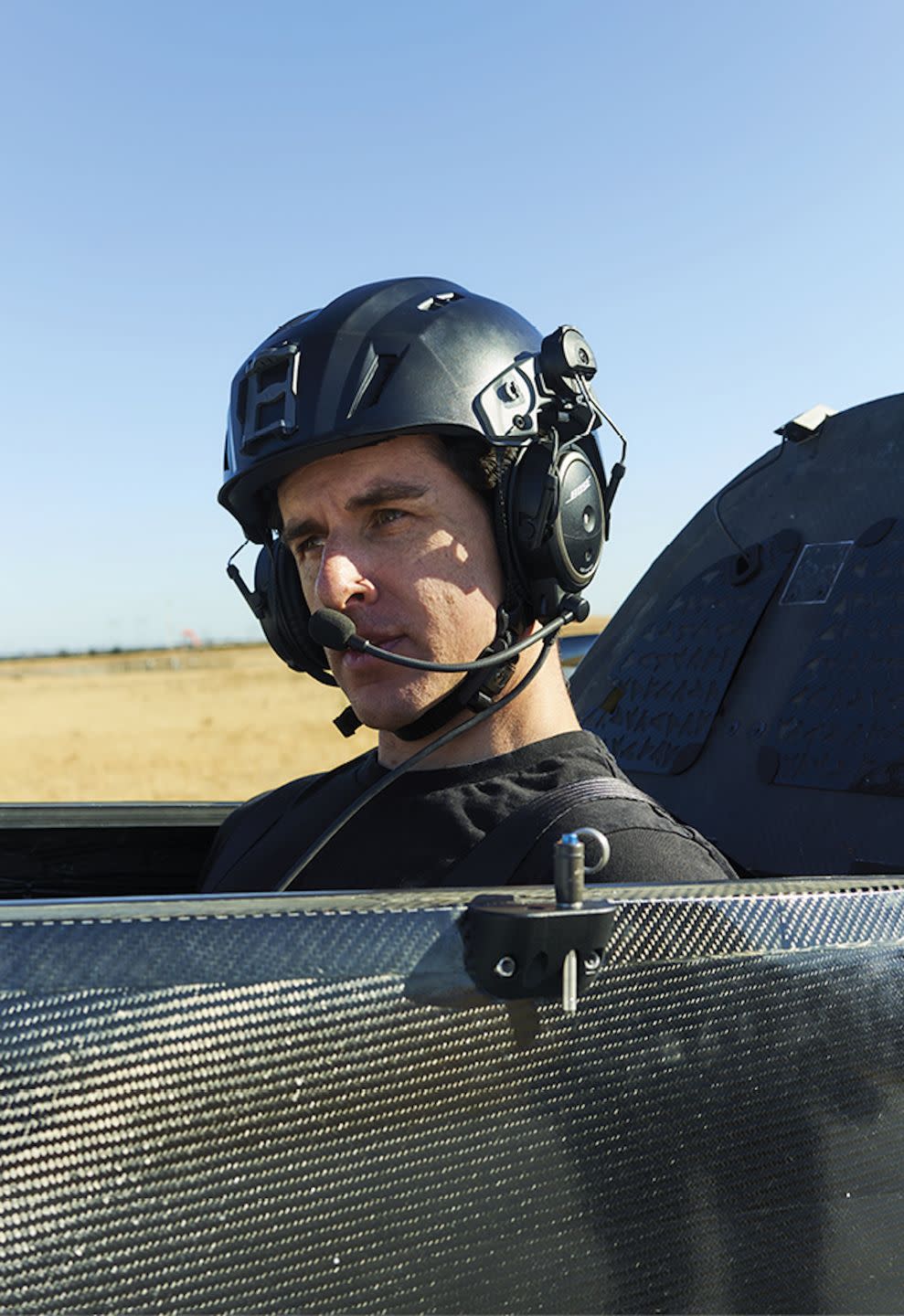
You don’t just Venmo Pivotal $190,000 and fly your Helix home. Customers must take an FAA ground-school pilot course and spend around two weeks training at Pivotal headquarters before being cleared to fly unsupervised. And there are rules about where and when you can fly an ultralight. The FAA essentially banishes the unlicensed from airports and densely populated areas. Nobody wants your hobby falling through their skylight.
Pivotal’s headquarters occupies two buildings of a humble office park in Palo Alto. Nearly half of the fewer than 100 employees are engineers, around a third of whom specialize in computer programming. That’s indicative of the complexity of the onboard flight computers.
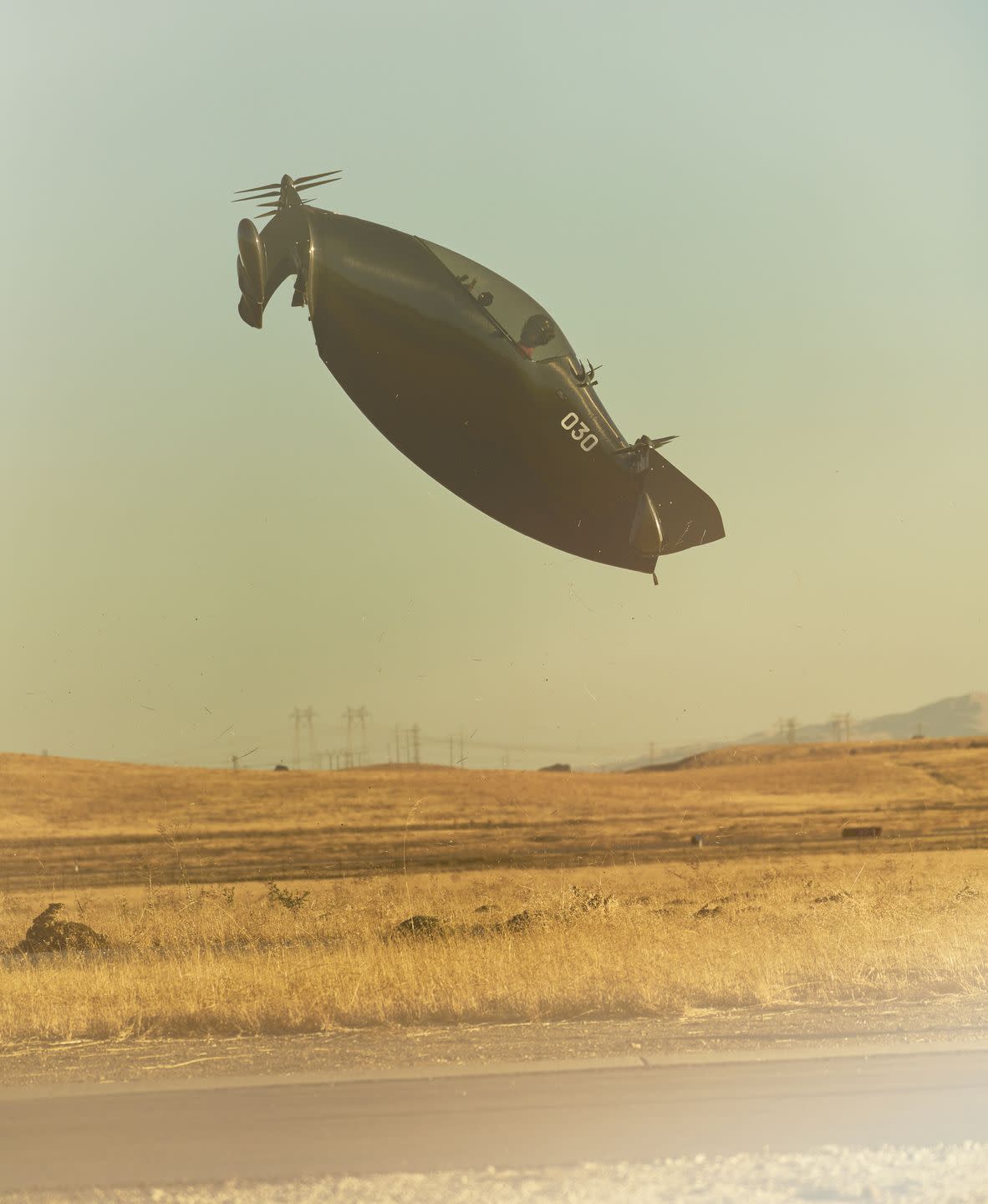
About 80 percent of the parts are made in-house. Eight lightweight doughnut-size motors are fixed to the carbon-fiber wings. According to Pivotal, no supplier currently offers a motor that is as light, compact, and powerful. Three flight computers (redundancy is common in aerospace) sit behind the pilot’s seat, a shockingly comfortable carbon-fiber piece modeled after an office chair.
Unlike with other VTOL aircraft, such as helicopters or the V-22 Osprey, the motors’ and propellers’ pitch doesn’t change, only their speed. Two elevons—a combination of “elevator” and “aileron”—at the back of each wing move up or down to direct thrust. There are two forward flying modes: Hover and Cruise. Turning is done by elevons and prop speeds depending on the mode. In stationary hover and during landing, you can move forward, backward, and laterally, as well as rotate 360 degrees.
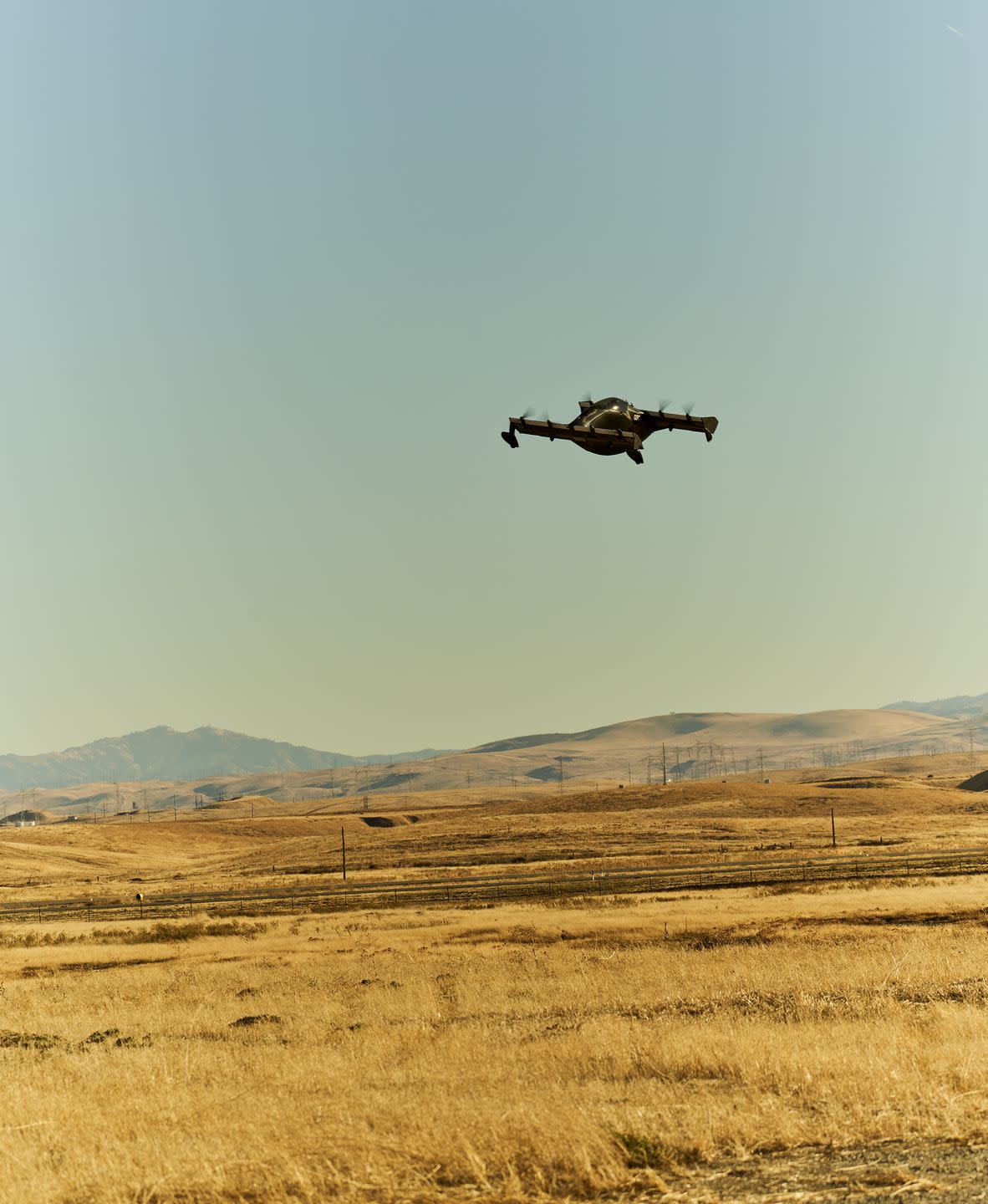
The cockpit has two joysticks, but only one is needed to fly (that redundancy thing again). The flight computers calculate the craft’s GPS location and movements, as well as wind speeds and your inputs. By altering the speed of the props or the elevons, the computer can hold you in place in 27-mph headwinds and use radar sensors to land automatically. The recommended flying altitude is 200 to 250 feet, with a ceiling of 1200 feet. In the more efficient Cruise mode, the aircraft can travel over 20 miles with a max speed of 62 mph.
I read the manual twice before arriving for training. The training seat looked like a thinly padded dentist’s chair bolted to a teeter-totter with a joystick mounted above each hip.
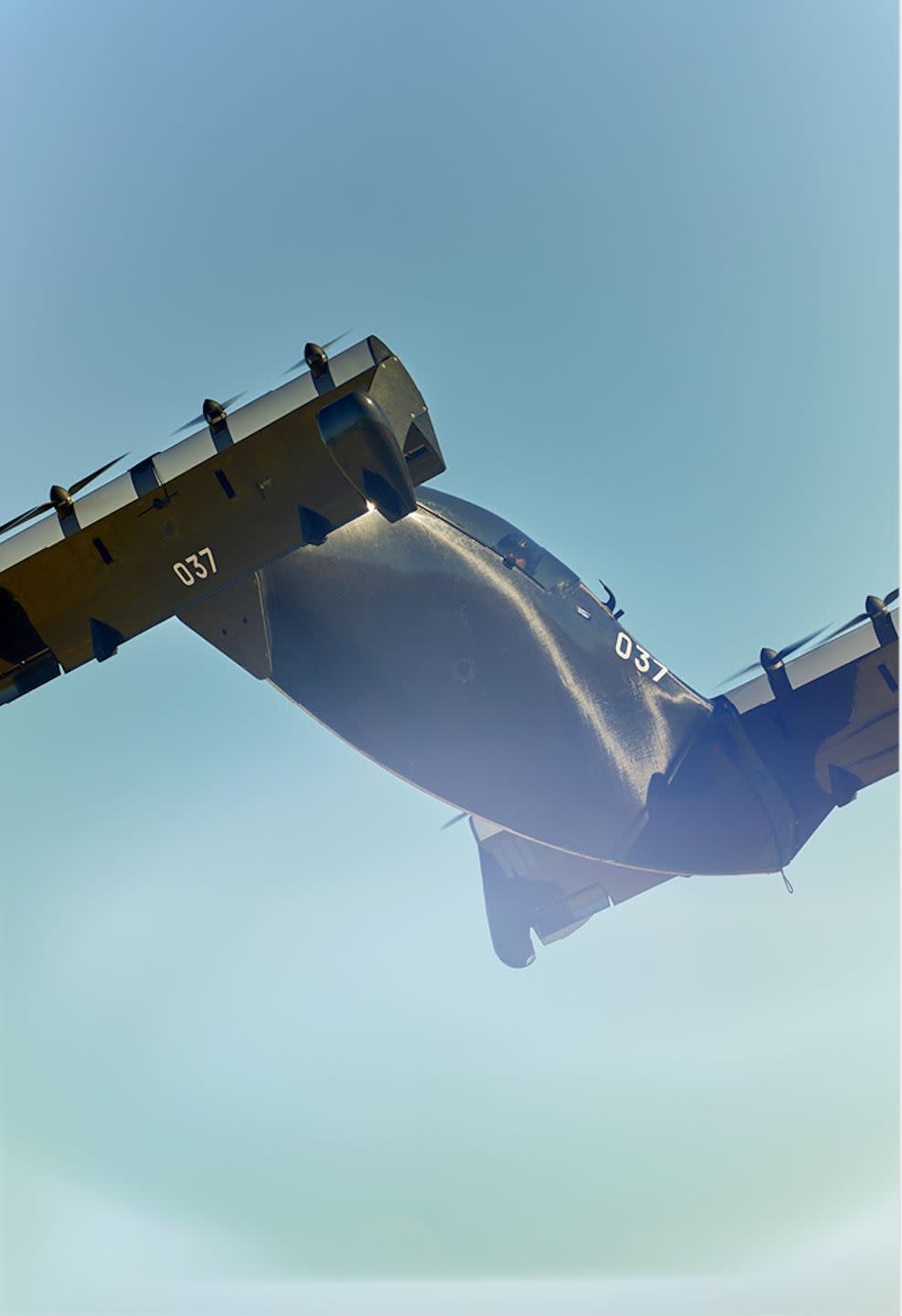
Robert Dreer was my first instructor. A U.S. Army veteran who flew military drones for several years, he obtained his commercial pilot’s license and ran the pilot training for Amazon’s ambitious yet brief drone delivery program before arriving here. He said my experience flying a DJI camera drone, driving cars, and playing video games (hear that, Mom?) would be helpful.
I spent seven hours per day in the sim. I practiced hovering, landing, monitoring motor temps, dealing with instrument outages, and landing in an emergency should a motor fail.
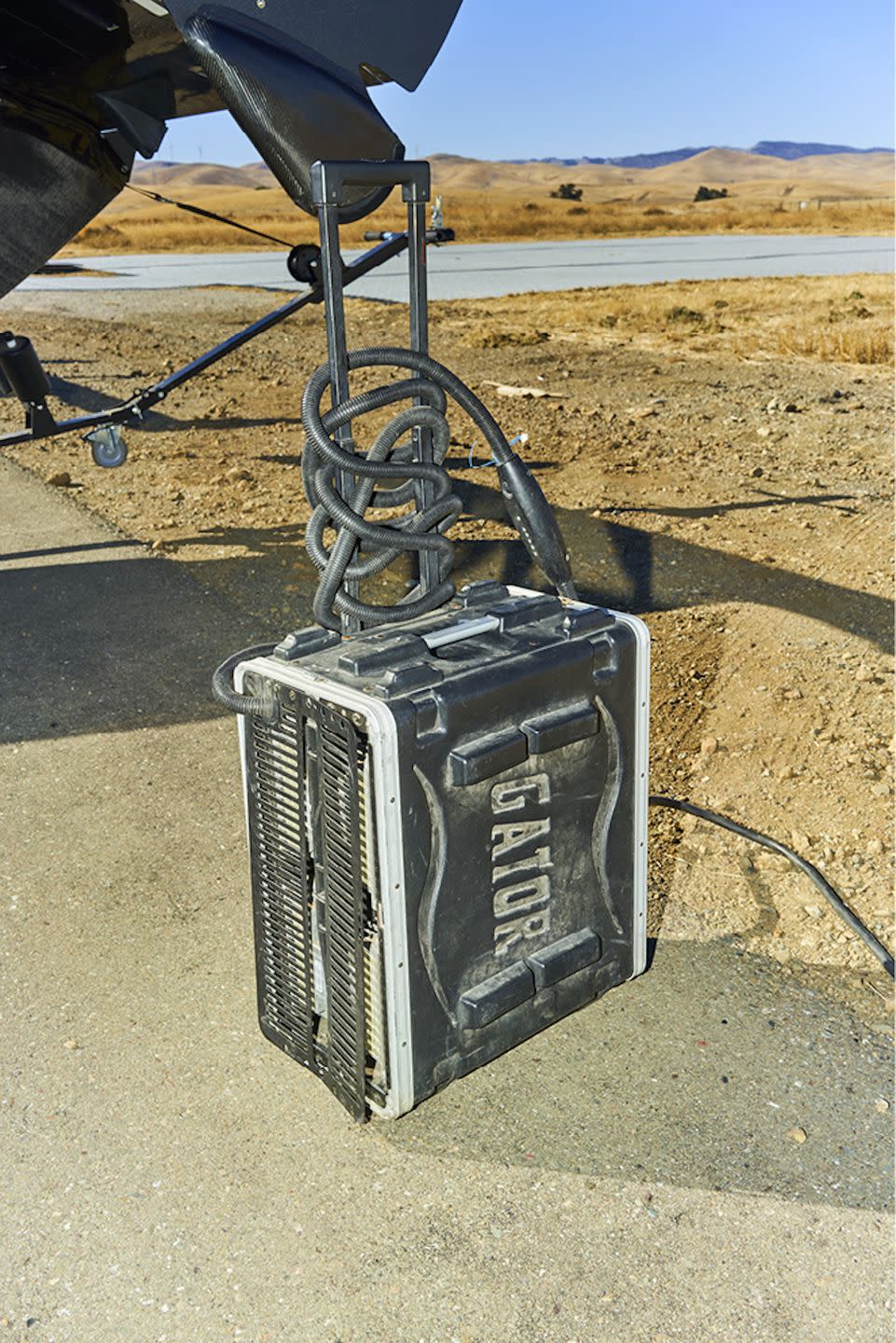
I read the manual a third time. Day three began with simulator work, focusing on wind changes and emergency descents. At 11 a.m., practice ended.
Byron Airport sits on a grassy plain two hours east of the Bay Area, separated by golden hills dotted with wind turbines. The BlackFly cockpit feels like a kayak with a plexiglass canopy. A tablet displays a map, battery life, motor temperatures, elevation, altitude, speed, heading, and any error messages that may arise. The only control apart from the on/off button is a red knob. Pull it, and the parachute will fire, craft on or off.

A car allows you to travel impulsively. Start the car; drive away. If you’ve trailered your BlackFly to a location, it needs to be assembled before takeoff. That takes two experienced people about 20 minutes. But the checklist will take another 10 to 15.
Kristina Menton, Pivotal’s COO, led me through the preflight checklist and flight briefing. First flight: Take off, hover at 30 feet, land. For the second, I could move in a box pattern to practice positioning to land. If those went well, I’d be allowed to fly a quarter-mile oval pattern 100 feet up.
Harness on. Canopy closed. Heart rate way up.
I pull back on the stick and press up on the thumb rocker. Within two seconds, the motors’ sound goes from gentle hum to hornet squadron. The whole craft rocks back on its keel and lifts into the air, like a plush toy grabbed by a claw, and I’m pressed against the seatback.
The motors heat up quickly. Depending on the ambient temperature, the BlackFly can hover for only 15 to 60 seconds before the motors overheat. I spot the ground markers and move back 10 feet. Pressing down on the thumb rocker brings me to about 15 feet from the ground, and “Auto Land” appears on screen. I thumb down again, and the craft touches down on its own, rocking forward on the keel. Success. Survival. I open the canopy, and excited expletives pour out.
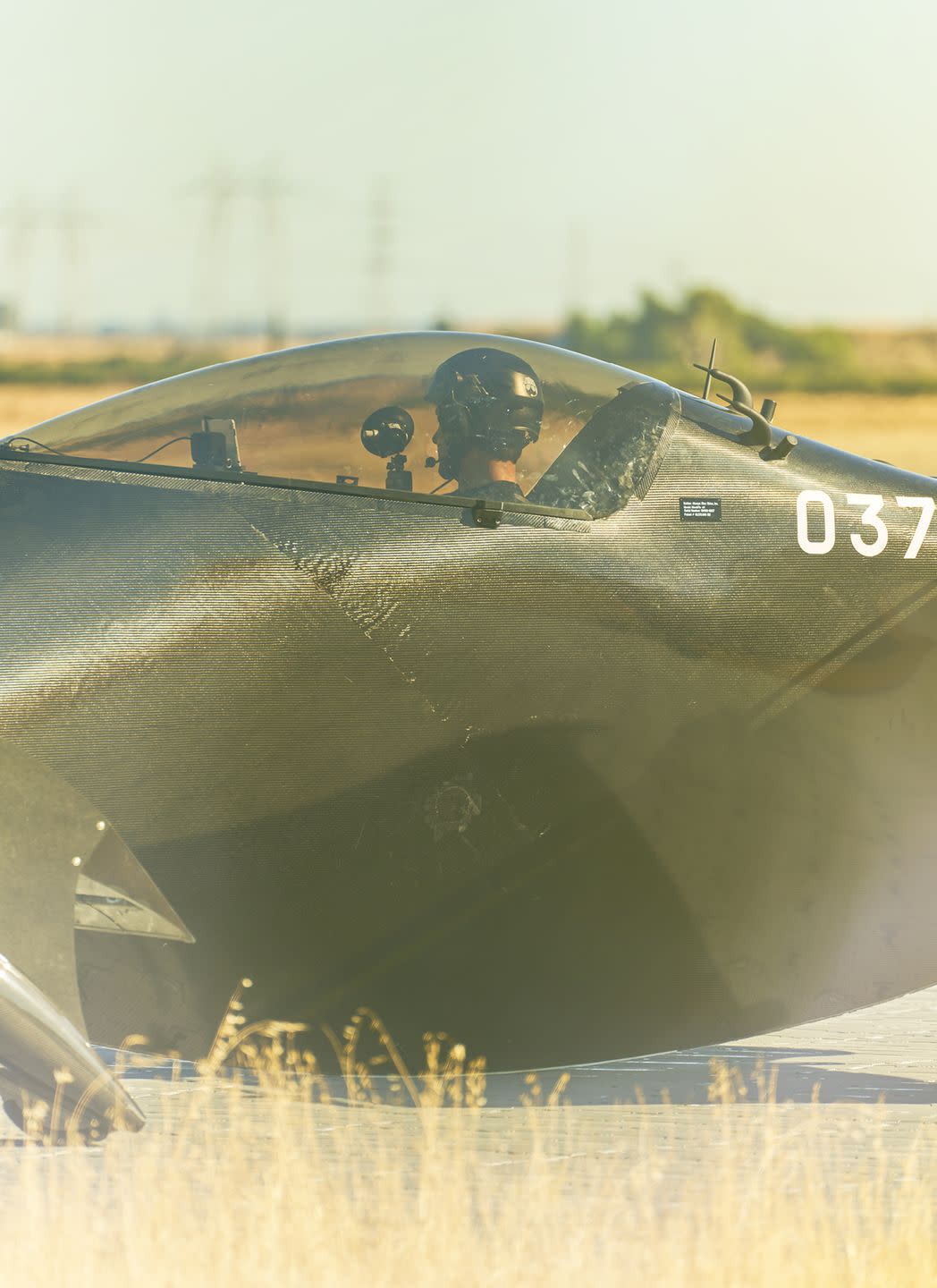
The box-pattern flight goes well. The BlackFly moves forward quickly; lateral movements are lazier and require more input. The system won’t let you tilt too far back or fly upside down.
Motor temperatures are always a concern. In Cruise, the wings provide nearly all the lift. In Hover, the motors spin furiously. I watched temperatures climb about 1 degree per second. At 120 degrees, it’s time to spot a landing place. At 140, the temperature indicator bars turn red—start your descent ASAP. Cross 160 degrees, and Pivotal will have to replace the motor.
After two successful flights, I get approval to fly the “racetrack” pattern.
Takeoff goes as before. At 40 feet up, I push forward, and the whole craft tilts, bringing the horizon into view. The motors slow—an alarmingly abrupt drop in noise.
The flying felt easy. Calm even. Moving at just 32 mph gave me time to look around and marvel at it all. I suddenly got the allure of private flight.
Transitioning from forward flight to landing takes real care and practice. Slow too aggressively, and you’ll rotate into a perpendicular flare like an eagle as it grabs a salmon. Basically, you want to keep the landing area visible over a wing until the last moment, then descend before your precious motors turn to lava. I came in a bit hot, grabbed the proverbial salmon, but landed on target. More excited expletives.
My final flight was twice as long but equally uneventful. As the motors powered down, I understood why people fly. I’ve skydived and always been interested in similarly extreme sports revolving around speed. This isn’t about going fast; it’s about freedom and perspective. Automobiles and aircraft are impressive tools humans have invented to overcome the biological limitations of locomotion.
Pivotal has lofty goals. It sees aircraft like this as useful for hobbyists, first responders, city transport (eventually), and the military. Advancements in energy and technology will surely bring about transit changes in the air as they have on the ground.
But flying cars? Not in the past and not in the future. There are too many rules and risks for the citizens of any populated area to be flying off to work. I understand the dream, but a dream it will remain.

A car-lover’s community for ultimate access & unrivaled experiences.JOIN NOW Hearst Owned
You Might Also Like
